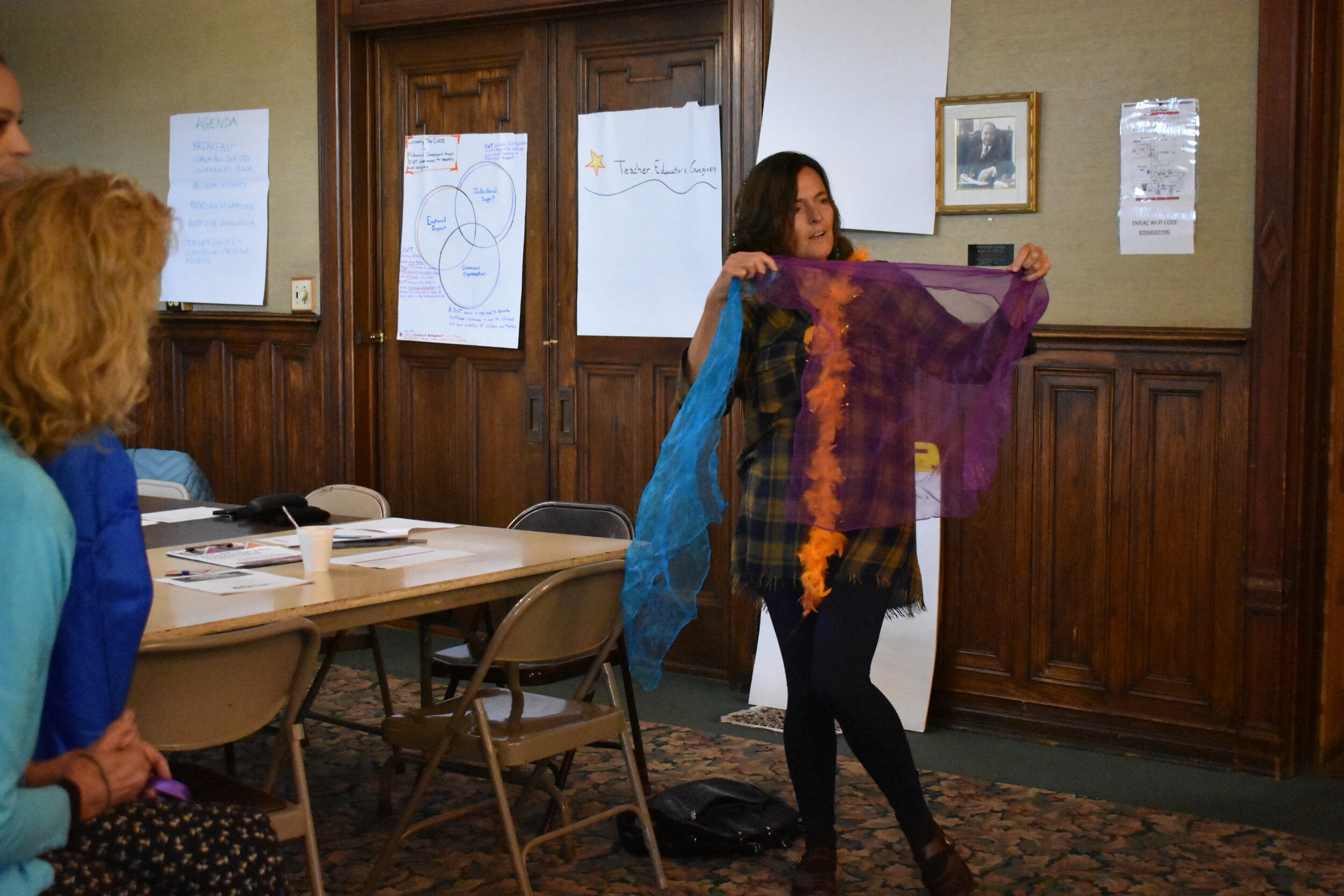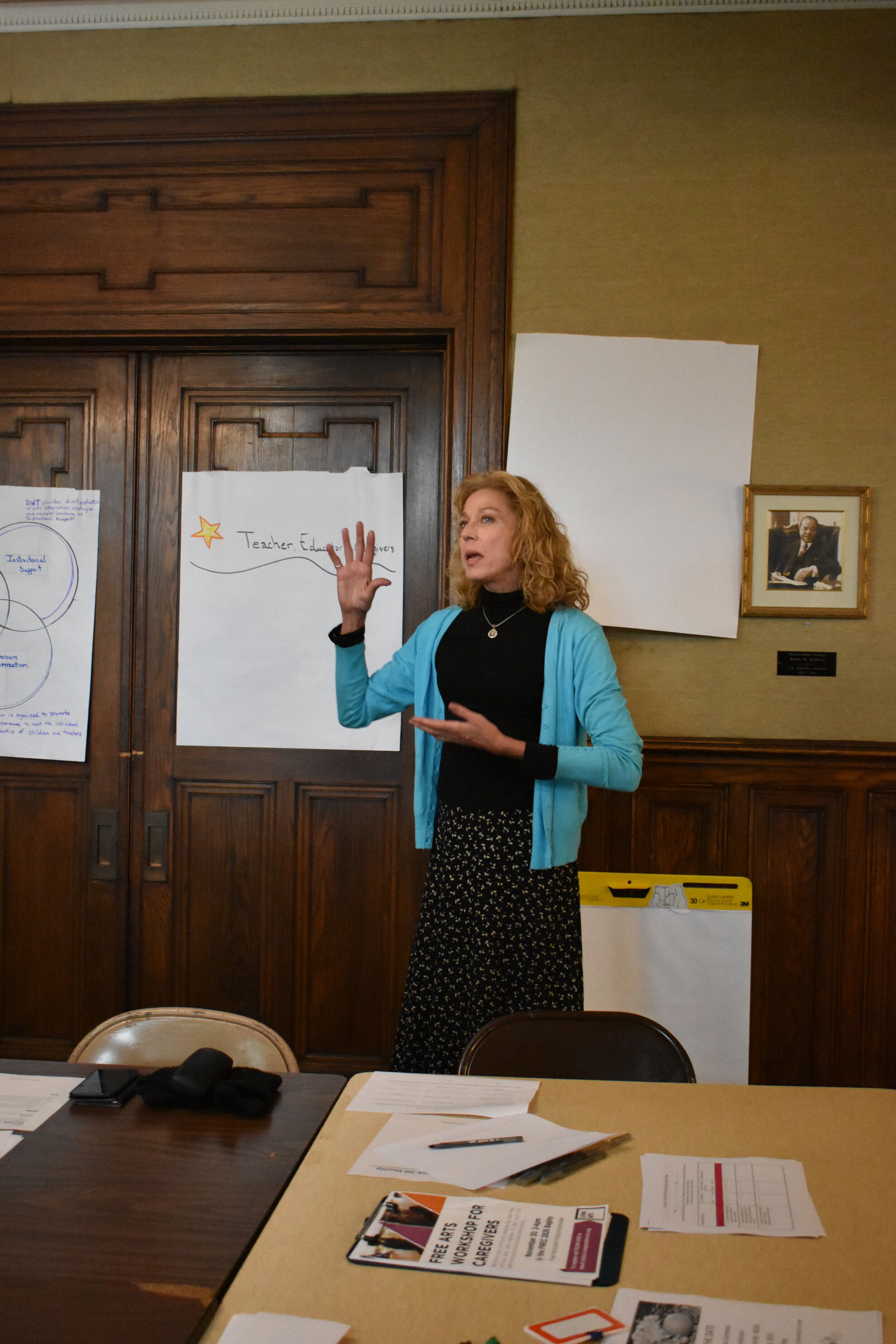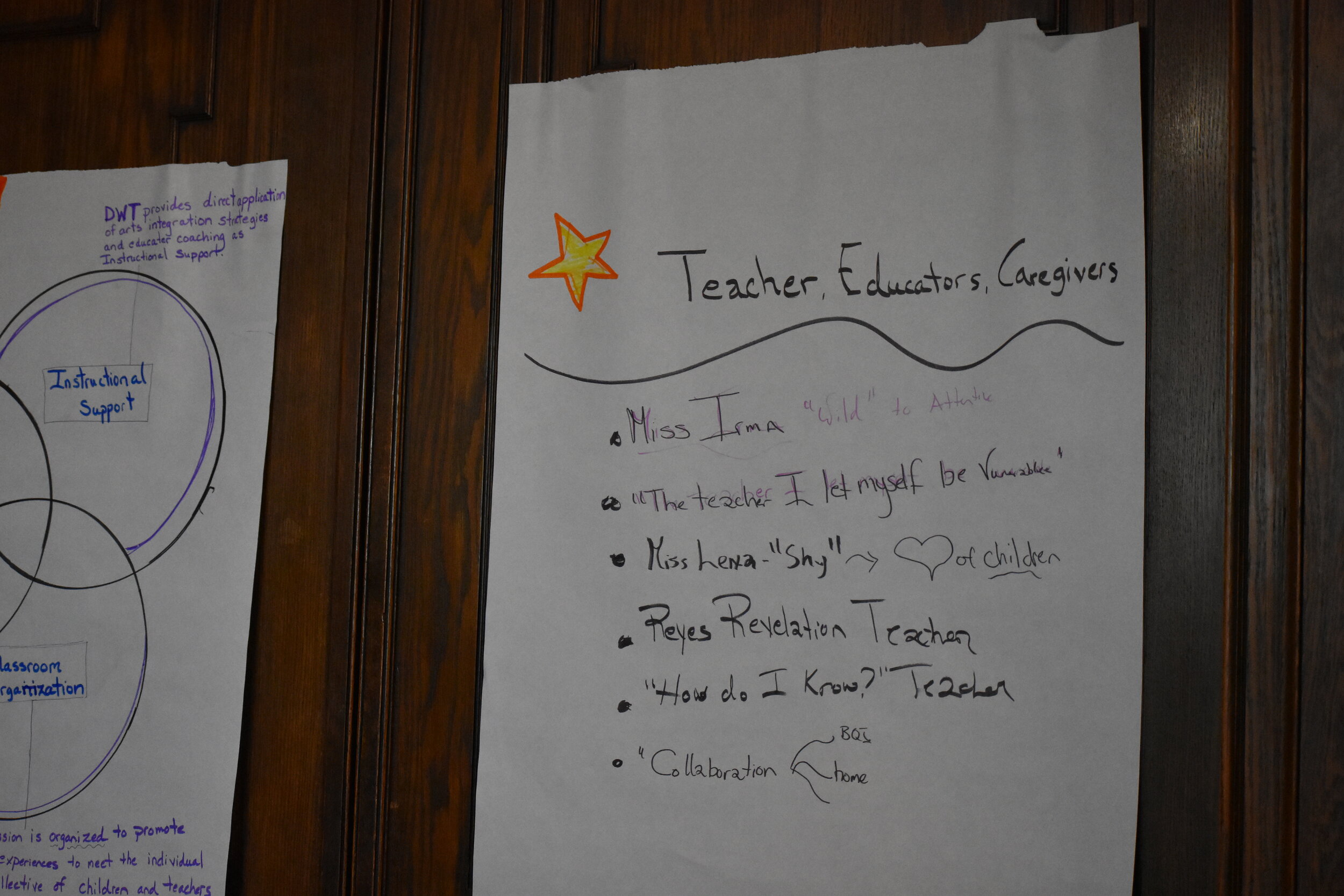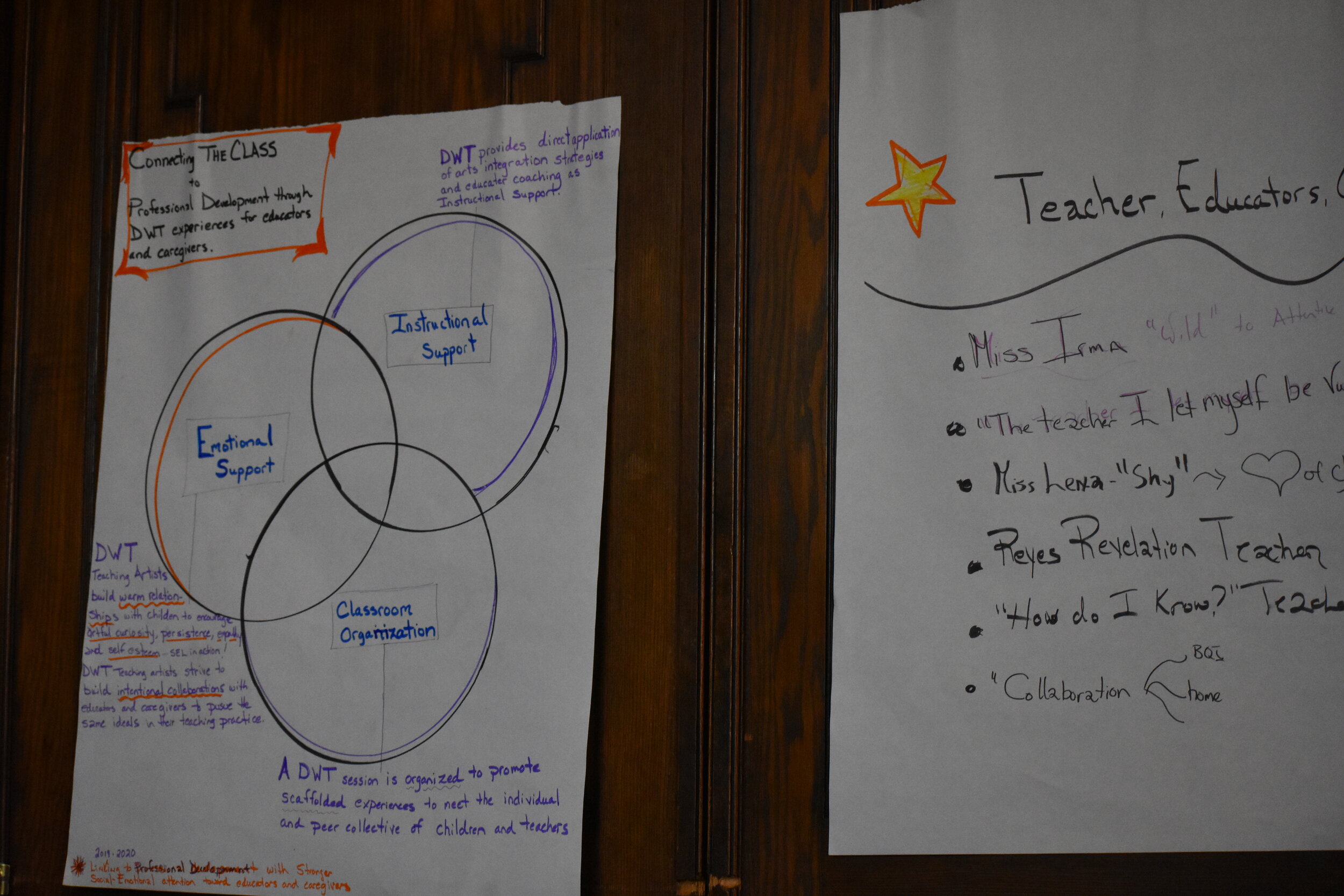Detroit Wolf Trap Fall Meet Up
On Wednesday, October 16, the Detroit Wolf Trap team (including teaching artists and staff) met for their fall meet up. Sharing coffee and a hot breakfast on a chilly morning, the team caught up and opened their day with a discussion on their best practices for self-care while they care for others.
Director of Programs Erika Villarreal Bunce gave a program update about the work we are doing with Informal Caregiver (ICG) Workshops and the Brightmoor Quality Initiative (BQI).
The goal of the work is to conduct outreach to caregivers in informal home settings, bring early learning and arts workshops to them to implement into their own work, and ultimately facilitate legitimacy for the work they do and create momentum toward licensure and state/federal funding for services. These workshops are being led by Karilu Alarcon Forshee and Alesha Brown, two of Living Arts long-standing Teaching Artists.
Some highlights:
Living Arts is working with 125 ICGs throughout Southwest Detroit in partnership with three organizations: Detroit Hispanic Development Corporation, Congress of Communities, and Mathematica Policy Research.
50% of the caregivers have sustained throughout the series
Parent-child workshop model allows caregivers to learn skills with their children, and childcare is provided to give them some time to learn separately
Through funding from the Fisher Foundation, Living Arts Teaching Artists Kimberli Boyd, Alesha Brown, and Shirel Hernandez have been working in Brightmoor with private child care facilities through the Brightmoor Quality Initiative. Bringing the Wolf Trap model to these spaces requires flexibility, adaptation, and resilience. With music, movement, and drama skills our teaching artists are able to impart literacy and social-emotional learning, as well as kinesthetic learning in these early childhood spaces.
An interactive session was led by DWT Specialist Roberta Lucas on modeling for co-leading. Using props, fabric, and animal movements, the Teaching Artists created metaphors for how they see their roles as co-leadership in the classroom. Animal representatives like the chameleon who’s adaptable and can give and take from others; cone of communication that receives and transmits; embracing cape that holds in and supports; elephant that holds up, and more were represented.
The day closed out with a deep discussion on relationships and a sharing of major takeaways from partner-teachers. These included honoring the space—but still being yourself, modeling resilience among resistance from teachers, carving your path while managing expectations, and allowing yourself to be vulnerable when your partner teacher opens up. This discussion focused on finding ways to thread through but also meeting teachers where they’re at.














